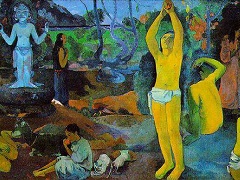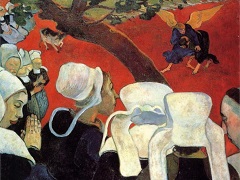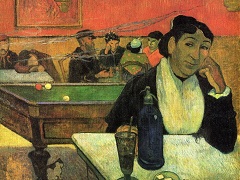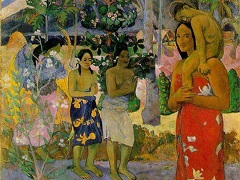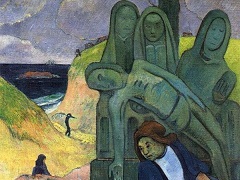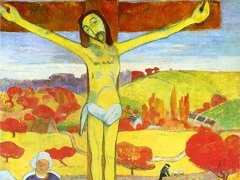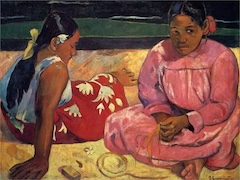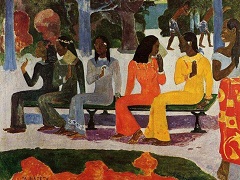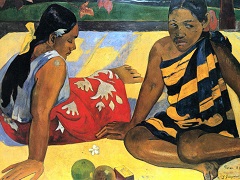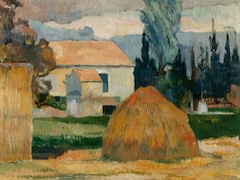Study of the Nude, 1880 by Paul Gauguin

"I AM NOT A PAINTER FROM NATURE," said Gauguin on many different occasions. But that was much later, when he had found his own imaginative style. In this canvas, done when he was still a "Sunday painter," he surely is still a naturalist, not casually or lightly, with an eye merely to surface effects, but minutely and conscientiously, with a painstaking care. It is this insistence upon truth of detail, this rendering of a "corner of nature" seen without temperament that dominates the picture.
Evident above all in the nude, it is also present in the rendering of the texture and variations of the surfaces that surround her voluminous figure: the feel as well as the color of the linen hanging at the top edge, the wall behind, the material upon which she sews. Indeed the straightforward truth of vision (one kind of vision) is so strong that it makes one forget the conventionalities, even banalities (not surprising in one so recently become a painter, and not a full-time one at that) of the setting and the composition: the drapery (reminiscent of certain harmonies of Eugene Delacroix) and guitar to close the corner space, the cushion on the bed, the indeterminate distance of the background wall.
It was this note of uncompromising honesty that the novelist Huysmans had in mind when, in 1881, he wrote of this picture, "I do not hesitate to declare that, among contemporary painters who have done nudes, none has achieved such a forceful note of reality, and I do not except Gustave Courbet." Huysmans (still a naturalist at this period) might have said that where Courbet struck the tone of Balzac, Gauguin strikes that of Zola. But in this picture only for his realism was destined to be short-lived.

